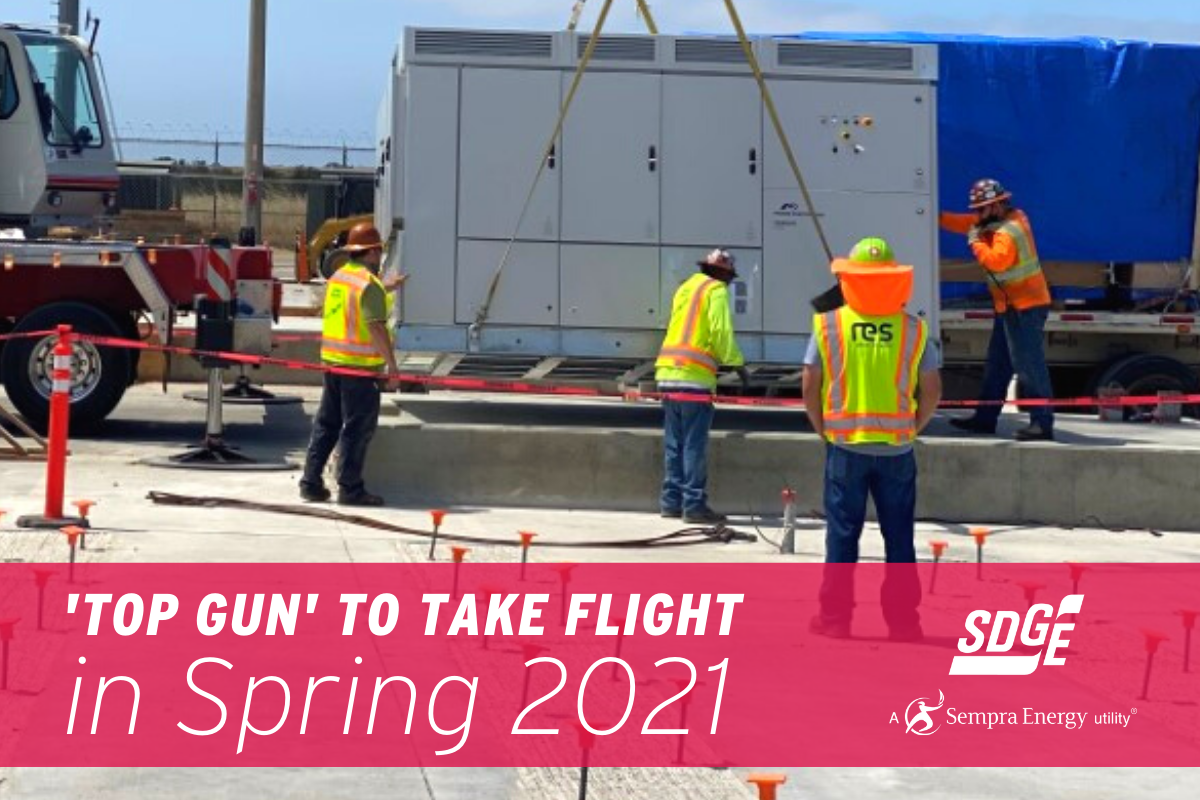One of the biggest challenges with abundant renewable solar energy is storing it for use when the sun isn’t shining or being able to tap into it immediately when there is a spike in energy demand. As part of our goal to achieve 165 MW of long-term energy storage, two new energy storage facilities are being built and an accompanying safety task force has been launched.
Under California Assembly Bill 2514, investor-owned utilities have been tasked with incorporating more energy storage into the energy grid to integrate greater amounts of renewable energy, defer the need for new fossil-fueled power plants, and reduce dependence on fossil fuel generation to meet peak loads. We currently have more than 45 MW or 175 MWh of energy storage and could have as much as 165 MW or 642 MWh of utility-owned energy storage online by 2022.
“We have been a leader in energy storage for almost a decade with projects like the Borrego Springs Microgrid paving the way,” said Kelli Fitzgerald, project manager at SDG&E. “As with all new technologies, energy storage best practices and safety efforts continue to evolve as more knowledge and experience is gained through deployments and lessons learned.”
Time to take flight
A new 30MW lithium-ion battery energy storage system dubbed Top Gun interconnecting to our existing Miramar substation broke ground in March and is expected to be in service by March 2021. Because of delays with fabrication of the battery containers due to the COVID-19 pandemic, the project is a few months behind schedule, but many construction milestones have been completed such as pouring foundations, completing overhead interconnection facilities and building and energizing the switchgear and control shelter.
Fallbrook planned to break ground
The Fallbrook energy storage project will provide 40 MW, or 160 MWh of energy storage connected to our Avocado substation. Construction on this lithium-ion battery energy storage system is expected to commence by the end of this year with the targeted in-service date sometime in the third quarter of 2021.
Safety task force launched
Consistent with our safety focus, the Energy Storage Safety Task Force was recently launched to ensure we operate the safest energy storage fleet in America.
The key objectives of the group are to re-examine and assess whether the current safety measures and technology along with the protocols and procedures in place need to change or be supplemented based on industry developments, then determine a path forward from a regulatory and funding perspective if any changes are required.
“Every energy storage system is custom-designed, and the technology evolves through the years and even project to project, but what they all have in common are robust fire suppression systems.to mitigate potential fire risk,” said Fitzgerald. “Some of the technology in place includes smoke detection, battery cell temperature monitoring, and a clean extinguishing agent, as early detection of any potential issue is critical.” The Fallbrook project will incorporate gas detection and venting, and plans are underway for existing locations to be retrofitted with additional safety features such as water sprinkler systems.
In addition to the new task force, a number of safety initiatives have been or will be implemented as part of our rigorous efforts to meet the needs of our customers in the safest manner possible including training first responders at local agencies on how to respond to an incident, creating Emergency Action Plans for sites, discussing best practices with other utilities and more.
When these new storage facilities come online, the batteries will act like sponges, soaking up abundant renewable energy and saving it until it can be tapped when demand is high or during the evening when solar energy is not available, increasing reliability in times like the recent heat events that caused rotating outages.


